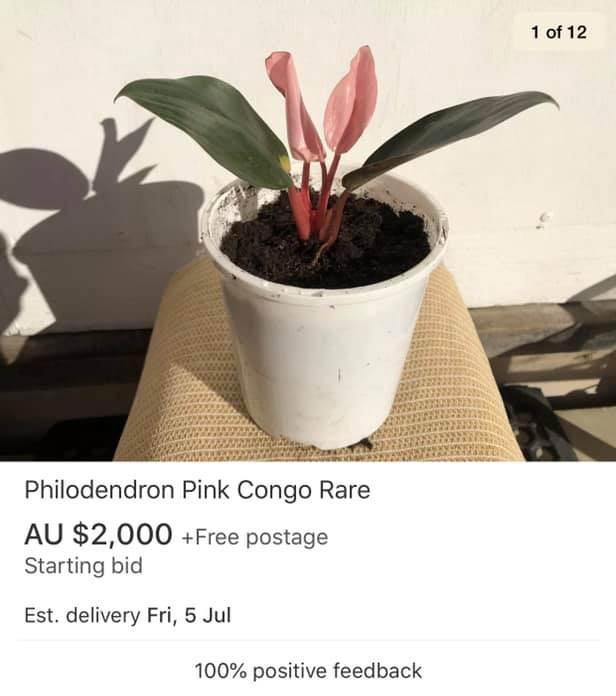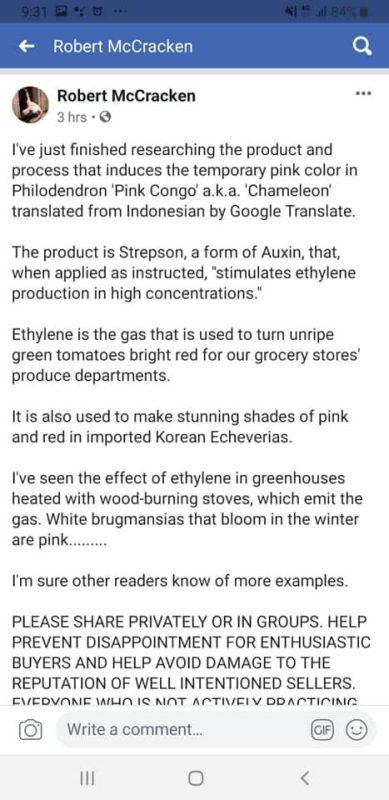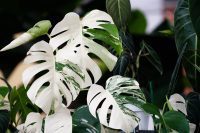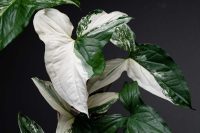The popularity of rare and unusual houseplants has skyrocketed in recent years thanks to the rise of plantfluencers on Instagram and Pinterest. Facebook groups, Marketplace, eBay and Etsy are popular sites for avid plant lovers looking for a new plant to add to their collection. Of course, when something is in high demand along come the scammers.
Philodendron pink princess a rare and striking hybrid that was developed in the 1970s and is highly sought after by plant collectors. The heart-shaped leaves consist of patches of green and bubblegum pink. Prices can range from $20 to over $200 or more.

Cue Philodendron Pink Congo
The popularity of the Philodendron pink princess saw a newcomer into the market, the Philodendron pink congo which is listed for as much as $2,000.

While the pink princess is a genuine plant, pink congo is a very expensive plant scam. The lower leaves of ‘pink congo’ are green, while the newer central leaves are pale pink. The pink colouration is chemically induced and eventually reverts back to green. There is scant information on how this process is actually carried out. One widely shared post states the following:
“I’ve just finished researching the product and process that induces the temporary pink colour in the Philodendron Pink Congo’ a.k.a. ‘Chameleon’ translated from Indonesian by Google Translate. The product is Stretson, a form of Auxin, that, when applied as instructed, “stimulates ethylene production in high concentrations.”
Further comments on Reddit claim:
Ethylene is the gas that is used to ripen fruit and force flowers to bloom. This means the plant needs to continue that treatment needs to be reapplied or the pink will eventually fade to green and no new pink will appear. However the exact treatment is a closely guarded secret so the chances of success at home are infinitesimal. The pink stays for approximately a year then fades.


Credit: Robert McCracken, Facebook
How to avoid being scammed?
- Facebook has a number of groups for rare plant lovers to share information and buy or swap rare plants. These forums can be a great source of information. If you are unsure about the validity or worth of a plant, the search function to see if previous specimens have been listed and what they were sold for.
- Look for specialist plant nurseries that sell rare and unusual plants. The benefits of this route are you have a brick and mortar store and can see the plant before you buy it and you’re getting an established plant.
- Take a copy of the plant listed for sale and run a reverse image search on Tineye to see if the photo has been used elsewhere or is a stock image.
- When buying online, buyers will often show photos of the plant/cuttings for sale as well as the mother plant, which is generally much larger than the plants for sale. If you are unsure, always verify. You don’t want to spend $1,000 on a large variegated Monstera deliciosa only to receive a small stem cutting.
- Unless you are an experienced plant grower, stay away from unrooted cuttings. It’s never a good feeling to lose a plant, but it’s even worse if you’ve paid a considerable amount of money for it.
- Before you jump into the world of rare (and expensive) plants, familiarise yourself with plant care by purchasing cheap and readily available plants. This gives you the opportunity to develop your plant caring skills without a huge financial outlay.
Julia is a writer and landscape consultant from Wollongong with a love of horticulture. She had been an avid gardener for over 30 years, collects rare variegated plants and is a home orchardist. Julia is passionate about learning and sharing her knowledge of plant propagation and plant toxicology. Whether it’s giving advice on landscape projects or sharing tips on growing, Julia enjoys helping people make their gardens flourish.




